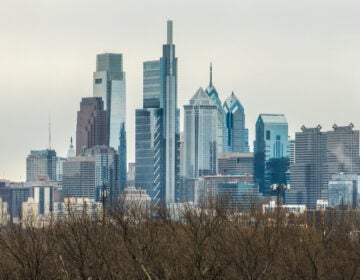Young? Unemployed? You’re not alone.
Young people may be the group hardest-hit by the recession, even if they’re not the most visible.
Young Americans may not be emptying their 401(k)s, but their numbers in the workforce are at the lowest point since World War II, according to a recent study by the Pew Research Center.
The national trend is evident in the Philadelphia area, where young people are both out of work or underemployed.
There’s the rocket scientist who works the night shift at Ikea.
Matt McCarty has the degree, but not the job. After earning his bachelor’s degree in aerospace engineering in 2010, he lives outside Philadelphia with his parents — not in the apocryphal basement, but in his old bedroom. Paying off student loans gobbles up most of his paycheck.
It’s not where he pictured himself.
“Not exactly,” McCarty says. “I mean, I wanted to do something along the lines of orbital mechanics or anything to do with rockets, because that’s what my major was in, But I was open to any aerospace job.”
He may not have the aerospace job he wants, but McCarty is still one of the lucky ones.
When Pew says more young people are out of the workforce, “young” means 18- to 24-year-olds; “out of the workforce” means unemployed, out of the job market altogether, or in school.
‘Particularly bad’ timing
The probablility of young people finding a job in their field has gone down the most, says Paul Harrington, director of Drexel’s Center for Labor Markets and Policy.
“Teens and young adults have really had a difficult time during this recession. And they have in every post-world war recession,” Harrington said. “This one’s particularly bad because it comes on the heel of really a longer-term trend of young people participating in the job market less and being employed less.”
Harrington says the number of kids ages 16 to 19 who work was cut in half in the last 10 years.
“I was at an Acme when I first moved to Philadelphia a year ago, and the checkout guy was considerably older than me, and there was a woman bagging the bags who was probably, I’m guessing, in her 70s,” Harrington said. “And that was a job that teenagers did when I was a kid and when my kids were kids.”
Having more young people in school could seem like a good sign in college towns such as Philadelphia.
Harrington sees it like an economist. It’s their only option. More people are in school because there’s less demand for them in the workforce.
While older people have been laid off, and have lost assets such as homes or 401(k)s, they’re bumping more young people down the ladder.
“You go to a restaurant or coffee shop and the person waiting on you, when you talk to them, they have a college degree and they’re holding this job because they can’t find a job connected to the college labor market,” Harrington said. “So they’re doing this, rather than becoming unemployed.”
A domino effect
Here’s the next big problem. When college grads such as McCarty, with a degree in rocket science, take jobs in retail, they’re bumping people with fewer opportunities and even higher rates of unemployment — young people who didn’t go to college or necessarily finish high school.
“My mom said back in the day we didn’t have this problem. We apply for a job, and within a week we’re working,” says Shirkey Warthen, age 22.
He has a tattoo on his back that says “Warthens are winners.” It’s something his father used to say, explains Warthen who has been looking for work, off and on, since before the recession started. When he started, he was 16.
At this point, Warthen says, he will take anything he can get.
“I don’t care if I have to wash someone’s tires, or sweep up and down the street,” he said. “Pick up little toothpicks off of the street, because I know I’m a good worker, and I’m diligent and I do beyond what I’m supposed to do.”
Warthen’s case is a little unusual. He has a juvenile record, but since then, he’s taught himself Spanish and sign language, as well as mentoring younger kids. He’s done everything except get his GED.
Harrington says the outlook for people such as Warthen is the bleakest. Pennsylvania’s employment picture is a little better than in Arizona or Nevada, but Harrington says employment in cities such as Philadelphia looks much worse. And it’s a really formative period, he said.
“If more and more kids are idle — not working, not developing the kind of fundamental behavioral traits that employers value — at the ages of 16, 17,18, 19 it’s going to hurt American productivity down the road and hurt those kids’ earnings down the road;” Harrington said. “So putting all of these youngsters back to work is a really important thing for us.”
A ray of hope
There is cause for some optimism. Harrington says college degrees do bring returns, and the Pew study shows more people are getting them.
The college graduate with the aerospace degree, Matt McCarty, still feels certain something will work out, though he recently passed the first anniversary of his winter graduation.
“Dec. 18 of 2011 was not a depressing day but definitely a day when I knew what it was,” he says.
For now, he and Warthen are still sending out resumes. The Pew study found more nearly three quarters of young people remained confident they would fulfill their goals.
WHYY is your source for fact-based, in-depth journalism and information. As a nonprofit organization, we rely on financial support from readers like you. Please give today.




